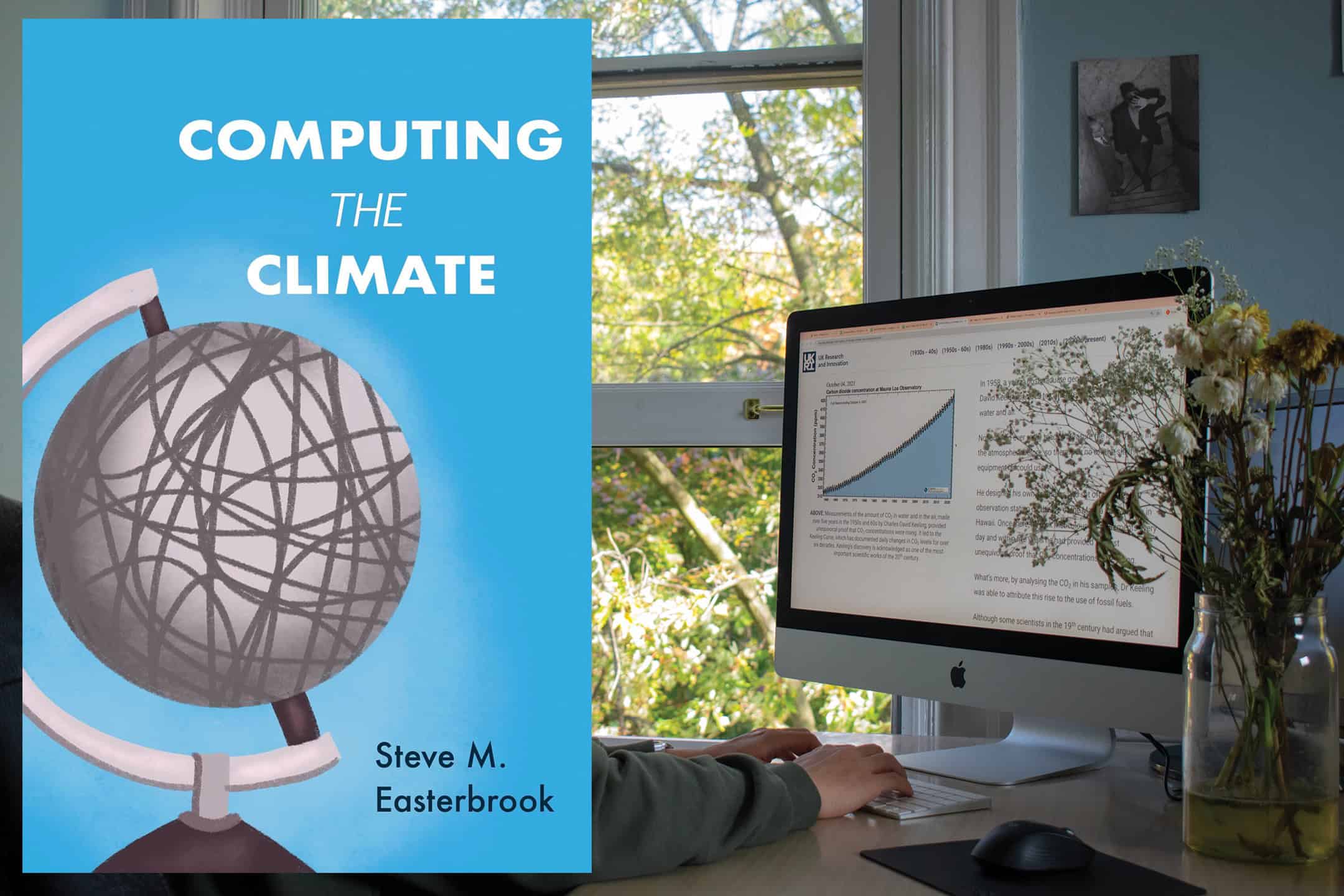In today’s world, where the effects of the climate crisis are seen in increasingly fierce storms, unpredictable seasons, and the alarming frequency of wildfires, it is more crucial than ever to understand the science behind these events. Steve Easterbrook, a computer science professor and the director of U of T’s School of the Environment, draws on his experience at NASA’s Independent Software Verification and Validation Facility in his book Computing the Climate, which makes complex climate model science accessible and relatable.
Climate models are tools that scientists use to understand Earth’s past, present, and future climate. Easterbrook demystifies the complex world of climate modelling, connecting it directly with our personal and community experiences, helping us to grasp what we know about the climate crisis and how to predict its impacts. Easterbrook’s book serves as a beacon for those who find science intimidating yet recognize its profound influence on our daily lives.
Translating complex science into everyday action
At the heart of Easterbrook’s work is a commitment to making the intricate details of climate science accessible to everyone. Imagine understanding predictions about rising sea levels or more intense heat waves without needing a degree in meteorology. He uses clear, jargon-free language to explain these complex models, allowing us to grasp how predictions are made and why they matter — whether it involves choosing renewable energy sources or advocating for policy changes.
Easterbrook’s narrative is more than just a series of explanations — it’s a story of human ingenuity and determination. He traces the evolution of climate science from early experiments to sophisticated models like the Community Earth System Model Version 2, showing that behind every scientific advancement are people — who are passionate, curious, and sometimes flawed but who always strive to better understand our world. This historical perspective helps us appreciate the depth and breadth of battling the climate crisis, connecting the dots between our past efforts and our current struggles.
Computing the Climate is informative and empowering to read. Easterbrook provides the readers with a clear understanding of how predictions are formulated, which equips us with the tools to make informed decisions about our future. Whether it’s voting on local environmental issues or engaging in policy debates, the knowledge gained from this book places power in the hands of the reader.
Equipping us to face climate challenges
This book is a call to action; an invitation to move beyond passive concern and actively engage with the greatest challenge of our time. For anyone overwhelmed by the doom and gloom of climate predictions in the media, Easterbrook offers a message of hope and empowerment: understand the models, understand the science, and you can help craft solutions. In the last chapter, the book explains how climate models have accurately predicted global warming for over a century and helped combat climate misinformation. By breaking down complex data into accessible language, readers are empowered to grasp the urgency of staying within the two degrees Celsius global temperature limit and to take specific actions, such as supporting international climate policies.
Among the compelling reviews of Easterbrook’s Computing the Climate, one point stands out for its broad appeal. Prominent climate scientist Michael Mann highlights in a review that Easterbrook’s work not only explains how climate models function and their critical role in predicting and mitigating the climate crisis, but also argues why we must trust these models and act upon their warnings before it is too late. For instance, Easterbrook discusses the 1992 Earth Summit and subsequent global climate policies, highlighting how understanding these models can guide our support for policies like the two degrees Celsius limit and net-zero emissions.
Climate science for everyone: ENV101
Computing the Climate is an essential read not only for those intrigued by the mechanics of climate models but for anyone concerned about the future of our planet — parents, business owners, activists, and especially students. At the forefront of bridging academic knowledge with real-world application, Easterbrook has designed an innovative course at U of T, titled ENV101 — Confronting the Climate Crisis.
Open to all undergraduates, this course uniquely equips students with the knowledge and skills needed to proactively address the challenges of a changing climate. Discussing the climate crisis from a social, scientific, economic, and cultural perspective, prepares undergraduates not only to understand but to engage with and influence the course of our environment.
Computing the Climate distills complex scientific concepts into understandable and actionable knowledge, which extends the ethos of Easterbrook’s course. The book invites readers into a vital global conversation about our collective future. Engaging with it is not merely an academic exercise; it is an act of responsibility and empowerment. For everyone who experiences daily weather changes and contemplates long-term climate shifts, picking up this book is a step toward becoming an informed, proactive participant.



No comments to display.